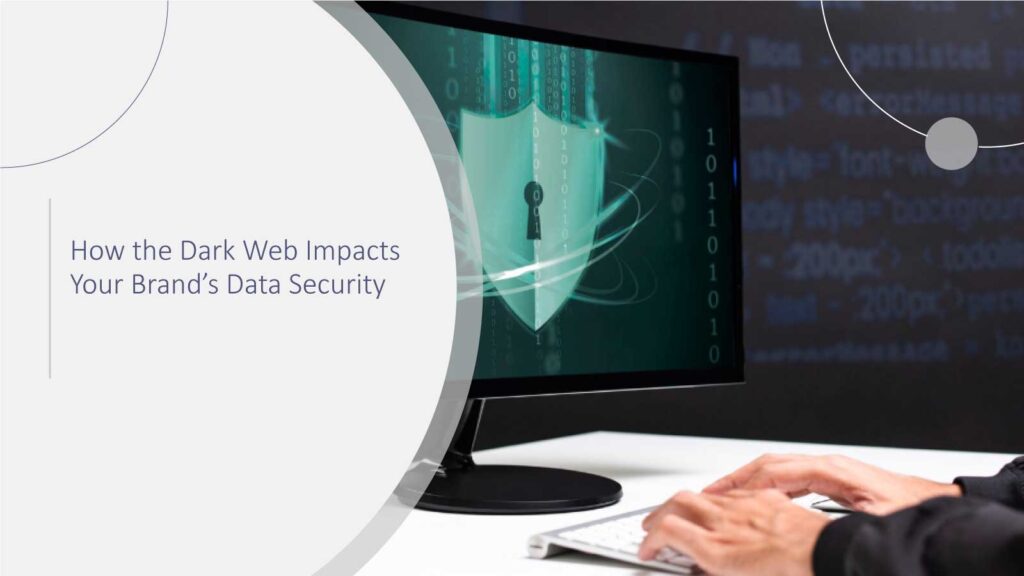Introduction: From “Always On” to “Always Restoring”
If your team operates contemporary apps, you’re familiar with the drill: new deployments, new integrations, continuous activity. Systems hum smoothly until an inappropriate behavior or misconfiguration comes along. With self-healing security, the defense never grinds to a halt. It identifies suspicious activity, quarantines it, reverts to a clean slate, and moves along typically within the time it takes to reload a dashboard. That transition from prevention to resilience by design is transforming cyber defense for US organizations. NIST formalizes this philosophy as the capacity to anticipate, resist, recover, and transform a perfect template for “always restoring” operations.
What Self-Healing Security Means
Self-healing security leverages AI, analytics, and automation to monitor systems around the clock, correct course when something strays from a secure baseline, and confirm protections are healthy subsequently.
Imagine cruise control with lane-keep support, only it keeps your controls, endpoints, and networks in sync with a secure setup. Federal tech reporting defines self-healing networks that utilize machine learning to identify anomalies and take corrective actions to keep performance and security going without waiting for a human to hit “approve.” At the endpoint level, platforms today track the health of core security software and reinstall or re-enable it if it’s compromised or crashes. This “application resilience” paradigm brings the healing idea down to each laptop and server.
Key takeaway: Self-healing isn’t a product. It’s a design strategy: instrumentation + closed-loop response + validated recovery.
Why Resilience Trumps “Perfection” in Self-Healing Security
Perfection is a principle, but IT in the modern world shifts hourly. So the key to success is muscle that heals quickly and adapts. IBM’s Cost of a Data Breach 2025 indicates time still correlates with memorability: quicker detection and containment mean less impact (global average cost $4.44M). Briefer breach lifecycles save serious cases, particularly in the US, where averages are higher. That’s precisely where automation and self-healing excel: condensing time.
US best practices also steer builders this way. CISA’s Secure-by-Design initiative incentivizes makers and SaaS vendors to take responsibility for security results and cook safe defaults into the lifecycle fuel for self-healing architectures that repair drift when it occurs.
How Self-Healing Security Works: The Closed-Loop
1) Sense. Telemetry monitors identity, devices, apps, configs, and traffic. Anomaly detection identifies out-of-pattern movements (e.g., new unsigned service, suspicious lateral movement, high-risk plugin).
2) Determine. Policies translate signals to action: quarantine a host, change keys, undo a registry modification, re-enroll an endpoint, or roll back a package. NIST’s resiliency perspective is useful here: recover and evolve, not merely block.
3) Execute. Automation deploys the solution. Endpoint controls get re-enabled, absent agents get re-deployed, and network routes get modified to continue crucial services.
4) Check & Learn. The system verifies the fix and learns from it in order to hone decisions in the future. That builds a living shield: still easy to use, but wiser with every iteration.
Where US Teams Are Using It Today
Federal & state networks. US agency-centric reporting identifies self-healing networks that use ML to maintain performance and security levels consistent throughout live events and migrations. It’s best suited for public-sector environments where continuity is critical.
Enterprise endpoints. Self-healing of applications reinstalls EDR, VPN, or DLP agents if they’re uninstalled or corrupted, cutting exposure windows without the need for manual reimaging. Telemetry from large enterprise fleets underlies this model.
Security operations. Incident-response programs are increasingly integrating automation with human expert analysts. Industry studies and Waves reflect a swift response as a choice criterion, faster is better, and automation assists teams in providing it. – Forrester.
The Business Upside (Why Boards Lean In)
Continuity: Automated systems recover and continue serving customers.
Speed: Containment done via automation and validated recovery minimizes dwell and lifecycle duration. IBM’s report associates a shorter lifecycle with reducing the very type of metric boards that are being monitored.
Confidence: Secure-by-Design practices and self-healing behaviors instill trust among regulators and customers.
Focus: Less time spent on repetitive fixes and more on architecture. (IR providers and tooling are increasingly focused on fast, predictable response at scale.)
Recommended: The Future of Cyber Defense: How AI Is Powering Autonomous Security in 2025
Implementation Playbook
1) Anchor on NIST-style resilience outcomes.
Take the anticipate, withstand, recover, and adapt framing and use it to inform policy, telemetry, and automated behavior. Develop your runbooks to drive those outcomes first.
2) Health tool, not detection tool.
Monitor agent health (is EDR installed and healthy?), config drift, certificate posture, and identity risk. Auto-reinstall and re-enroll if a control is lost.
3) Utilize closed-loop policies with guardrails.
Automate safe actions: turn off a dangerous plugin, rotate a token, roll back a baseline image, or short-term segment traffic. Reserve approvals for high-impact steps but provide machine-speed for common fixes.
4) Harden backups and test restoration at speed.
Plan for speedy, tidy restore, immutable snapshots, least-privilege backup permissions, and regular drills that verify end-to-end recovery time.
5) Measure what matters (and publish it).
Use a scorecard your board can read in a minute:
- Mean time to detect (MTTD)
- Mean time to restore (MTTRestore)
- % endpoints with self-healing controls active
- % critical apps protected by auto-restore
- % incidents auto-contained in under 5 minutes
6) Align SOC + IT Ops.
Self-healing is across organizational boundaries. Incident response, endpoint management, and identity teams need to have the same automation platform and change controls. Industry research indicates that response quality and onboarding discipline are linked to improved outcomes. Treat it as a program, not as a bolt-on.
Practical Examples
Agency network modernization: Government coverage reports agencies implementing self-healing networks to maintain services in a stable condition across cutovers and holiday seasons. ML-based telemetry identifies drift and dynamically alters routes or QoS to ensure citizen services remain accessible.
Enterprise endpoint resilience: Major US enterprises leverage application self-healing to regularly check that core agents are present and executing, then reinstall or re-enable them when they’re tampered with, shutting down exposure without the need for deskside visits. Annual index data is derived from millions of devices managed.
Time-to-contain priority: Industry reporting and analysis highlight speed of response as a performance characteristic for US incident-response vendors, reiterating why closed-loop automation now shares the bench with human competence in today’s SOCs.
Governance, Risk, and Compliance
Automatically enforced policies. If a control does stray, the platform corrects it and records the incident for auditors.
Secure-by-Design proof. Signatory vendors release artifacts and default-secure configs useful in your third-party risk files.
Resilience stories. Correlate your KPIs with known references (NIST SP 800-160) so the board and regulators get a common framework.
What to Watch in 2025
AI defense and “shadow AI” exposure. IBM is flagging AI-related incidents and access-control vulnerabilities. Anticipate more autonomous defense and improved controls for the use of AI. Create policies in advance. Autonomous SOC assistants. Research indicates agents that triage, create detections, and run playbooks are excellent when combined with hard guardrails.
Healthcare and critical infrastructure telemetry. Industry and academic notes document increasing closed-loop monitoring adoption in industries where uptime is equal to safety.
Conclusion
Self-healing security is a working strategy for keeping business flowing. Sense drift early, repair it quickly, check the outcome, and learn in the process. With NIST-aligned results, CISA-style secure by default, and health-conscious automation at every level, resilience is the default mode. Your customers don’t need to know about it; they’ll notice it in consistent logins, consistent services, consistent trust.
FAQs
1) Is self-healing security the same as “automation”?
Not quite. Automation executes tasks. Self-healing leverages telemetry and policy to sense drift, execute the correct fix, confirm success, and learn for the future, closing the loop.
2) Which US frameworks enable a self-healing approach?
NIST SP 800-160 (Vol. 2) describes anticipate, withstand, recover, and adapt a natural alignment with self-healing design. Several teams also align vendor controls with CISA’s Secure-by-Design principles.
3) Where do we begin in a large US enterprise?
Start at the endpoint and identity layers: allow agent-health validation and auto-restore; configure closed-loop policies for high-confidence repairs; track MTTRestore and report it to the board.
4) Does self-healing cut breach cost?
It cuts time, which is coupled with cost. IBM’s 2025 report indicates shorter breach lifecycles match lower average cost, as a strong incentive to shorten detection and recovery.
5) Are there actual examples in US public-sector or enterprise environments?
Yes, US-oriented reporting features self-healing networks within government environments and application-level self-healing in large enterprise fleets.
For deeper insights on agentic AI governance, identity controls, and real‑world breach data, visit Cyber Tech Insights.
To participate in upcoming interviews, please reach out to our CyberTech Media Room at sudipto@intentamplify.com.




